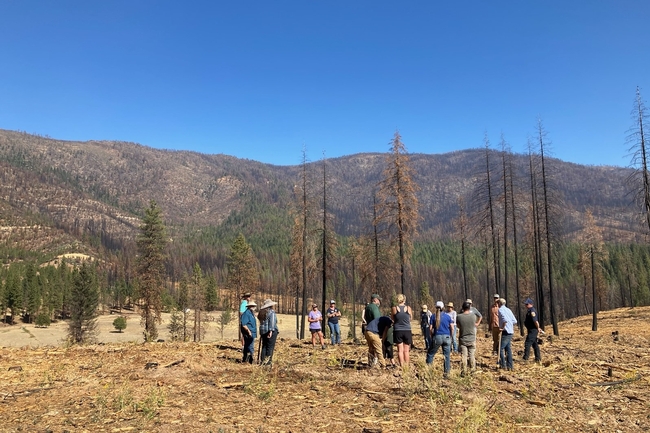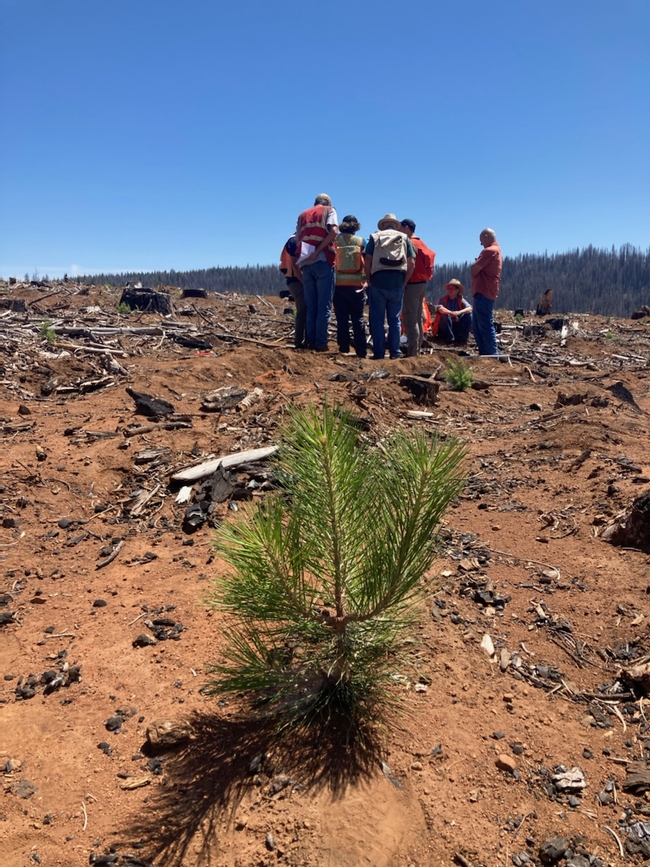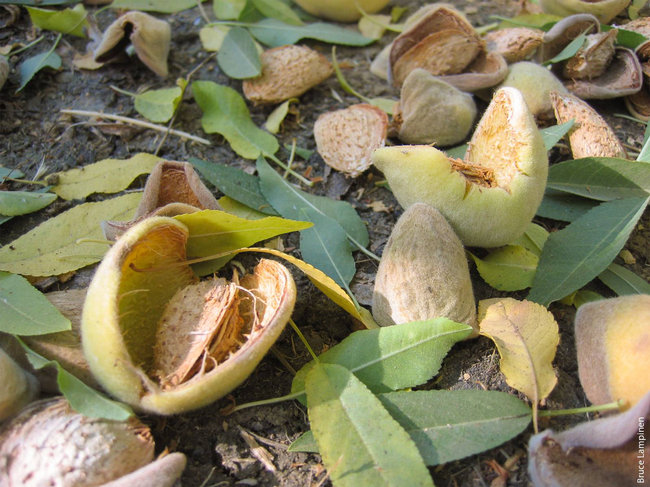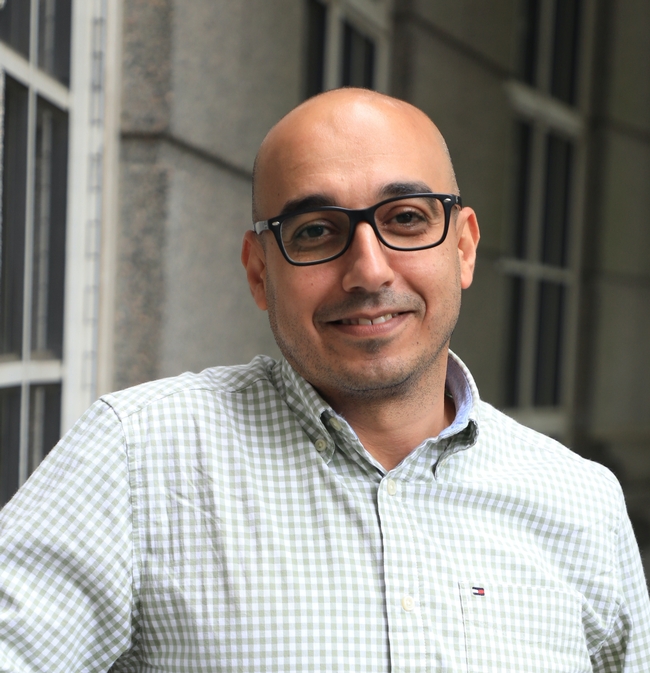Posts Tagged: Innovation
4-H ag tech breakfast to support next generation of leaders, innovators
Event at FIRA USA in Yolo County includes look at agricultural robotics, automation
The FIRA USA ag tech conference, Oct. 22-24 in Woodland, showcases the latest robotics and automation innovations. A special breakfast during the event will support tomorrow's leaders, scientists and engineers who will realize the potential of those technologies.
Proceeds from the breakfast (Thursday, Oct. 24, 7:30 to 9 a.m. at the Yolo County Fairgrounds) will benefit higher education scholarships for 4-H youth participants interested in applying technology to a wide array of agricultural practices.
During the breakfast, attendees will hear from 4-H alumni – including Glenda Humiston, University of California vice president for agriculture and natural resources – on the impact of their participation in the program.
As a leading nationwide youth-development organization, 4-H delivers research-based, positive youth development practices through its community-based programs. Youth gain life and work readiness skills through hands-on projects. Studies have shown that youth who engage with 4-H programs are more likely to:
- Achieve academically
- Serve in leadership roles in school and community
- Engage in some form of community service
“4-H clubs, project teams and after-school programs develop skills in areas ranging from animal science to robotics, and from natural resources to coding,” said California 4-H Director Kimberly Sinclair Holmes, who will speak at the breakfast. “Scholarships help ensure those seeds of interest and passion blossom into meaningful careers that contribute to agriculture and society.”
Tickets are $100 each and can be purchased at https://bit.ly/4-HFIRAEvent.
The ticket includes all-day access to FIRA USA, touted as “the largest robot playground in the world,” where attendees can get an up-close look at laser weeders, autonomous harvesters, drone applications and a host of other ag tech innovations.
FIRA USA is a collaboration of GOFAR (Global Organization for Agricultural Robotics), Western Growers, UC Agriculture and Natural Resources, and The VINE.
UCCE report: Local forest restoration teams effective at rapid response
Quickly planting trees after wildfires crucial for communities, ecosystems, carbon goals
As the climate crisis fuels more high-severity wildfires, many forests – adapted to bounce back from frequent but less-intense fires – are struggling to recover quickly.
“In a lot of locations, forests in the Sierra Nevada that burn at high severity are not regenerating on their own,” said Susie Kocher, University of California Cooperative Extension forestry and natural resources advisor for the Central Sierra. “They need to have living trees to drop seeds; if everything dies in an intense fire, then there's a high likelihood in those locations that trees might not return for a while.”
According to Kocher, a forest may take multiple decades to grow back on its own, seeding in very slowly from the edges of a burn. To speed up that regeneration process, a pilot program of local “Emergency Forest Restoration Teams,” or EFRTs, have been helping forest landowners rapidly remove dead trees, plant new seedlings and expedite other vital tasks after wildfires.
Kocher is a co-author of a recently released report evaluating the EFRTs, which appear to be effective in assisting often-overwhelmed private landowners navigate competitive funding programs and complicated permitting pathways after wildfire. Small private landowners in California own 7 million acres, comprising 22% of forested land across the state.
“None of our current assistance programs were really designed to rapidly respond to high-severity fire disasters,” Kocher said. “And we're just getting so much more high-severity fire now that there needed to be a different way of helping people, besides business as usual.”
Lead agencies improve coordination of restoration efforts
Drawing from a successful model in Washington, Kocher and other members of the Governor's Forest Management Task Force recommended the formation of EFRTs in 2019 and this recommendation made it into the California Wildfire and Forest Resilience Action Plan of 2021.
Following the Caldor, Dixie and Tamarack fires during that year, disaster relief funds from CAL FIRE and the U.S. Forest Service enabled the establishment of pilot EFRTs in each of the affected regions. A key innovation was designating a local lead agency to coordinate restoration efforts: the El Dorado Resource Conservation District (Caldor), the Feather River Resource Conservation District (Dixie) and Alpine County (Tamarack).
“The idea is that one well-established local agency gets the funds to carry out all the reforestation work,” Kocher said. “They find contractors for the landowners and plan and carry out all the work needed, including dead tree removal, site preparation and replanting; this helps it be more coordinated across the landscape and reduces competition for contractors.”
“Also, for most of that work, there's no cost to the landowner – which is a huge benefit to them, because these things can get really expensive, like many thousands of dollars an acre,” Kocher added.
Although there was an initial steep learning curve for the local lead agencies on the complexities of reforestation and the maze of required permits, they quickly executed a significant number of forest restoration treatments. Within two years, the three pilot teams had collectively completed over 2,500 acres of dead tree removal and 1,400 acres of conifer planting.
“The overwhelming benefit of the pilots was that a lot of work got done on the ground, that otherwise would not have been done – at least not in the timeframe that was made possible by the EFRTs,” said Daylin Wade, a UCCE staff research associate and co-author of the recent report, who synthesized feedback from interviews of professionals involved in the program.
Rapid reforestation better financially, ecologically
Both Wade and Kocher underscored how the EFRTs were crucial in completing restoration tasks in a timely manner. Removal of dead wood becomes trickier and more expensive over time, as the trees decay and are dangerous to cut down.
“A major accomplishment was getting trees out of there while it was both safe and economically viable to remove those trees – and getting trees in the ground before shrubs dominate the site,” Wade explained.
It's also imperative to quickly remove the dead trees to reduce the fuel load and minimize the chances of re-burn in the area.
“If you're not doing this work, then you're actually endangering the investment that you're putting into rebuilding communities that burned, because they're in danger of burning again if you have huge piles of dead trees everywhere,” Kocher said.
Furthermore, expediting those tasks helps restore the forest cover that is crucial for sequestering carbon and achieving the goals of California's sweeping climate action plan – such as attaining carbon neutrality by 2045.
“We have very ambitious carbon goals for our forests in California, and so reestablishing them – even on private lands – is a public benefit,” Kocher said.
Evaluation of EFRTs by UC Cooperative Extension continues
In addition to enumerating the progress of the three EFRT case studies, the evaluation report also lists recommendations to further enhance the program, such as securing rapid and flexible funding for future EFRTs, improving guidance for local lead agencies and streamlining permitting processes.
The authors also stressed the need to expand opportunities for the commercial sale of woody material in the aftermath of a wildfire event. Selling logs and wood chips reduces the volume of material that would need to processed onsite by the EFRTs and their contractors, thereby defraying some of the costs for that work.
But there simply hasn't been a sufficient market for that woody biomass.
“It's a big barrier,” Kocher said. “If we had a healthier timber market, it would be easier to make this stuff pay its own way and be less of a subsidized endeavor.”
UC Cooperative Extension's EFRT evaluation work – made possible by funding from the U.S. Forest Service State, Private and Tribal Forestry, Region 5 – will continue for the next couple years. On the heels of this first report, Wade will next gather and summarize feedback from private landowners on whether the EFRTs are meeting their goals.
And, later this summer and fall, researchers will begin assessing the ecological success of the plantings in the restoration areas, surveying seedling survival and gauging the volume of competing vegetation.
“It's hugely encouraging that we've gotten all these trees in the ground, but it's not the end of the process – it's just the beginning,” Kocher said. “Trees and forests need to be maintained over time, so this next step will let us see how successful that has been, and if there are additional steps needed to actually ensure that these trees succeed and thrive.”
The full report, dedicated to the memory of report co-author and UCCE advisor Ryan Tompkins, can be found at https://ucanr.edu/efrt.
New project aims to use farm waste to fuel bioeconomy
UC ANR to help create database, support technology for sustainable bioproducts and biofuels
In California's Northern San Joaquin Valley, crop leftovers such as almond shells, fruit peels and orchard trimmings can potentially be converted into sustainable bioproducts and biofuels – with the right technology. The philanthropy Schmidt Sciences' Virtual Institute on Feedstocks of the Future, which supports replacing fossil feedstocks with renewable biomass sources, has awarded new funding to a group investigating how to make better use of the diverse agricultural waste in the region.
“This is an important project for California as it quantifies the diverse ‘ingredients' in the North San Joaquin Valley available to fuel the emerging biomanufacturing industry in the state,” said Gabe Youtsey, chief innovation officer for the University of California Agriculture and Natural Resources. “This foundational work will kickstart a completely new innovation bioeconomy in the Central Valley that will create new high-paying jobs for our communities and support a resilient food and agriculture industry through circular biomanufacturing.”
Circular biomanufacturing is a process that uses waste streams as raw materials to create new products.
“Circular means taking waste streams from agriculture such as almond shells or grape pomace, forest waste or food processing waste and using that material as the ‘feedstock' in a fermentation tank to create new bioproducts,” Youtsey explained.
The group, “Building the Circular Bioeconomy in the North San Joaquin Valley” or BioCircular Valley, is co-led by the Department of Energy's Lawrence Berkeley National Laboratory (Berkeley Lab), UC Berkeley, and BEAM Circular, with partners at UC Merced, UC Agriculture and Natural Resources, the Almond Board of California and USDA Agricultural Research Station in Albany.
“California has this incredible diversity of materials, but they aren't well understood – and this makes it difficult to know how to extract the most value out of them,” said Corinne Scown, a senior scientist at Berkeley Lab and UC Berkeley and one of the project leads. “We want to characterize them and make that information available so companies can more easily figure out which feedstock is a good match for them, and then use that agricultural residue to make everything from bio-based polymers and chemicals to sustainable materials and aviation fuels.”
One of the group's goals is to build a publicly accessible database and user-friendly map full of information about different feedstocks, the raw plant materials and biomass that can be broken down and used to make bioproducts. That includes where feedstocks are located, when they are available, how they are currently disposed of, how they perform in different bioreactors, how much sugar or lignin they contain, whether they can be processed with other feedstocks, their greenhouse gas footprint, the potential cost, and much more.
UC ANR's role is to collect data on available feedstocks from forest, agricultural and food processing byproducts, as well as municipal waste streams through sampling and observation.
“We will do this through the extensive knowledge and relationships we have with the California agriculture industry in the North San Joaquin Valley,” Youtsey said. “UC ANR will also support industry outreach as new ‘conversion' technologies are developed, to pilot them with California growers and processors.”
The project will also test ways to improve the flexibility of the conversion process, which breaks down feedstocks to prepare them to make bioproducts. Researchers will apply artificial intelligence to their lab-generated data to improve predictions of how feedstocks can be processed most efficiently or blended together. Being able to use the same technique on different (or mixed) kinds of plant matter would open up ways for companies to make bioproducts more easily.
“Our region has a fantastic combination of diverse and large-scale agricultural activities alongside manufacturing expertise, making this a great place to scale up bioeconomy innovation,” said Karen Warner, CEO of BEAM Circular. “This project will allow us to reduce barriers to using our region's abundant waste streams in more sustainable and valuable ways, so that we can create the products that people need with renewable inputs that are better for the planet.”
The project builds on ongoing efforts to establish biomanufacturing capabilities in the northern San Joaquin Valley, which includes San Joaquin, Stanislaus and Merced counties. Providing better data on how to convert the valley's millions of tons of agricultural waste into valuable products may spur biomanufacturing companies to build facilities nearby, minimizing how far the raw materials have to be moved and generating new jobs.
“This project is designed to benefit a region that has massive potential, but so far has been economically left behind, and to develop a new industry that can provide improvements in air quality, water quality and greenhouse gas emissions as well as significant opportunities in economic equity and the creation of new jobs,” said Blake Simmons, director of Berkeley Lab's Biological Systems and Engineering Division and the BioCircular Valley project lead.
“This kind of research started as basic science, and now we're bringing information and solutions to people who can use them. And the knowledge generated through this project will advance not only the ability of the NSJV to make use of its own regionally available future feedstocks, but will also accelerate the understanding of feedstocks relevant across California and across the U.S.”
The new funds for the project come from the Virtual Institute on Feedstocks of the Future, a partnership between Schmidt Sciences and the Foundation for Food & Agriculture that supports collaboration on research to transform biomass into alternative feedstocks for biomanufacturing. The award is one of five announced today, which total $47.3 million over five years. It is expected that the five teams will collaborate to share best practices and knowledge to boost the bioeconomy at the national level.
“We are grateful for Schmidt's generous support that will help deploy advanced technologies on the ground,” said Alicia Chang, interim president of Berkeley Lab Foundation. “The foundational research and expertise developed through work for the Department of Energy sets the stage for this team to apply their capabilities to bring jobs and lift the community and the economy in the Northern San Joaquin Valley.”
UC food-safety specialist tests biosensors to ensure safe produce
Ahmed El-Moghazy joined UC Agriculture and Natural Resources as a UC Cooperative Extension food safety specialist in February and is based at UC Riverside. Food safety, according to El-Moghazy, are measures that ensure food is free from harmful contaminants, prevent foodborne illnesses and is safe to eat. El-Moghazy is responsible for assisting California farmers and food processing facilities to enhance food safety practices by training appropriate personnel and addressing food-safety issues on their farms.
As the principal investigator for the 2-SAFE Lab at UC Riverside, El-Moghazy is investigating the accuracy and applicability of point-of-use biosensor technology. The small, lightweight and easy-to-use sensor can be used while out in the field or in a packing house to test contamination of liquids such as irrigation and washing water or solids like food samples.
Testing for foodborne pathogens traditionally takes two to three days and the process can be costly. The biosensor technology that El-Moghazy is using is inexpensive and can provide results within one work shift, which allows businesses that grow fresh produce to confirm the safety of their products before sending them to the market.
The alternative, selling contaminated food to consumers, is not only detrimental to human health, but can ruin the reputation of businesses, making way for unanticipated costs associated with recalling contaminated products and regulatory consequences including fines and sanctions.
El-Moghazy is also developing the next generation of antimicrobial surface coatings and materials that can rapidly control the foodborne pathogens and hinder the transfer of harmful bacteria from contaminated food to non-contaminated food.
El-Moghazy is optimistic that his research can safeguard public health, reduce the burden of foodborne illness and protect the integrity of businesses. Although El-Moghazy serves the entire state, he is dedicating a large part of his needs assessment and efforts in Southern California where high-value specialty crops such as avocados and citrus are grown.
"Did you know that one in every six Americans get sick from eating food contaminated with a foodborne pathogen?" asked El-Moghazy. Understanding the fatality of foodborne illnesses, El-Moghazy believes that increasing awareness through education is an essential aspect of his role. "It's true, but not many people realize this, or that 40% of foodborne illnesses stem from fresh produce."
To protect consumers, the U.S. Food and Drug Administration requires farms with a certain level of annual sales (adjusted for inflation) of fruits and vegetables typically consumed raw to have one employee who has completed an FDA-approved Produce Safety Rule Grower Training.
In addition to certified trainings, El-Moghazy offers technical assistance to ensure growers comply before and after inspections, as well as resources for several topics including produce safety, agriculture water, flooding, soil amendments, worker health, hygiene and training and postharvest handling and sanitation. He can also assist in developing food-safety plans and other general farm food-safety protocols. His technical expertise covers all aspects of food production and supply including irrigation water quality, hygiene of harvesting tools and transportation.
Before joining ANR, El-Moghazy completed two years as a visiting scholar in the UC Davis Biological and Agricultural Engineering department before continuing as a postdoctoral fellow in the UC Davis Food Science and Technology department for 5 years. Much of his work was rooted in the development of biosensors and antimicrobial materials for food safety. While in Davis, he collaborated with local farms and food processing companies on food safety research and extension.
El-Moghazy earned a Ph.D. studying developmental biosensors for food safety applications to detect pesticides residues from a joint program offered by University of Perpignan in France and Alexandria University in Egypt. He also earned a master's degree in developmental biobased fungicides and a bachelor's in agriculture science from Alexandria University. Finally, he completed a fellowship at the Institute of Plant Protection, Szent Istvan University in Hungary, where he studied how to extend shelf-life of fresh produce using biomaterials.
El-Moghazy is based at UC Riverside in the Department of Microbiology and Plant Pathology. He can be reached at aelmogha@ucr.edu or (951) 827-0257.
Postharvest Center: New research focus and outreach
Still providing the world with top-notch information
UC Davis has been a leading source of information for people handling, packaging and transporting crops since the beginnings of the Postharvest Research and Extension Center in 1979. Now, the center is strengthening its focus on the needs of industry, offering fresh courses, weaving strategic partnerships and expanding into digital media, all while building up its research capacity to better serve the needs of the produce industry.
“We're asking people in the industry, ‘How can we support you? How can we better listen to you?' We want people to know we're not disconnected know-it-alls,” said new center co-director Bárbara Blanco-Ulate, an associate professor in the UC Davis Department of Plant Sciences. “We're getting more faculty involvement, people with expertise in related fields such as quality engineering and safety, as well as bringing in emeriti faculty and people from around California. We're forming partnerships with organizations around the world, and we've opened up to people from other institutions around the country.”
“The larger the network, the more things we can do,” added fellow co-director Irwin R. Donis-Gonzalez, an associate professor of UC Cooperative Extension in the Department of Biological and Agricultural Engineering.
The foundation: Expanded research
The new co-directors will beef up the center's applied science component with the hiring of a research specialist. They aim to provide new information that can be used industry-wide as companies explore new ways to handle and store fresh produce.
“We're building the capacity to respond to industry requests for research,” Blanco-Ulate said.
New courses, national reach
Their first workshop, held recently, demonstrates the center's renewed vision and commitment to broad networking: The Agricultural Water Systems Workshop addressed current concerns around water management and risks to food safety. Partners in the course included the Western Growers Association, the University of Arizona, the University of Florida and Salinas-based Taylor Fresh Foods, Inc.
Courses given over the past several years that have been recorded will be posted to the center's new, online video library and to the center's YouTube channel.
“People can watch those courses for free,” Blanco-Ulate said. In addition, new courses will be offered in-person and hybrid.
The co-directors are working with the University of California to offer continuing and professional education credits to course participants.
Online resources – many for free!
The center's website features a database with scores of free product fact sheets, which are downloaded by users around the world. The fact sheets are so highly regarded that they are considered expert evidence in legal proceedings, Blanco-Ulate said. Visitors to the website can also find links to research papers published by UC Davis faculty, including seminal works by Adel Kader, who founded the center.
Books are offered through the center's online bookstore and include titles through UC Agriculture and Natural Resources. Ten new titles are being planned, including topic-specific updates taken from previous classics.
Debunking myths: Ethylene
A new newsletter deals with a new problem: Misinformation about food and food handling that spreads through social media. One example is the use of ethylene to ripen produce such as bananas, so that they can be safely stored until ready for the consumer.
“Ethylene is safe for humans and does not leave any harmful residue on produce,” Donis-Gonzalez wrote in the center's latest newsletter. Even better news, he added: The levels of ethylene used on food are a tiny fraction of the concentrations that would be needed to create an explosion, one of the false alarms being raised in social media.
Evolving with the times
After 47 years of service, these and more updates will keep the center at the forefront of an evolving postharvest world. The top goal: Meet the needs of agriculturalists, industry and consumers.
“We are adapting to new needs, with both the resources and the workshop we're offering,” Donis-Gonzalez said.
“As a land-grant institution, we take our outreach mission seriously,” Blanco-Ulate added.
Related links
More about the UC Davis Postharvest Research and Extension Center.
This story first appeared on the UC Davis Department of Plant Sciences site.









